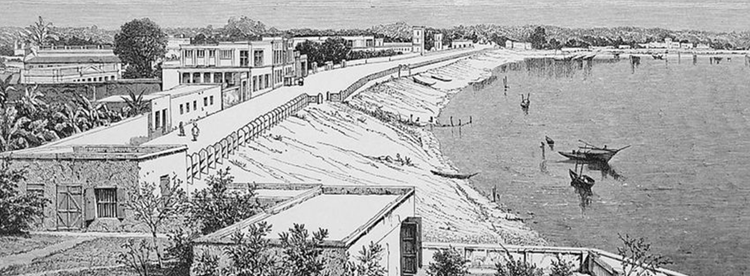For smooth Ad free experience
For smooth Ad free experience
French colonists bought a piece of the moon from Indians and set up a company one day. After that, everything changed until this phase came along. Here's what it's about.

Happened on 2nd October 1954
This day brings the story of a small city named Chandannagar situated in the Hooghly district of West Bengal. In many ways, it is a city, more or less a community, that took its time to decide about what its future should look like. Although Bengal is one of those places from which the British colonies in India began, the French colonists were much earlier still and even this time the colony spread from Calcutta. All thanks to the era of Imperialism, though!
Historical accounts tell us that every colonial created small town on foreign lands established commerce channels, and gradually set up administrative structures. The French did the same when they purchased a large piece of land from a Mughal Subahdar in 1688. The French, who had full access and power to establish a company there, officially named it Chandannagore, since it is situated beside a crescent-shaped riverbank.
As the years passed, the French East India Company flourished. With the appointment of a French governor of the city, the monopolistic regime began to take control of the administration. Around a lakh, people lived in the city at this time, and Calcutta was just a poor cousin of Chandannagar. During this period, many notable initiatives were undertaken in the areas of housing, education, military, judiciary, and huge development.
During an era when the British Raj was expanding throughout the subcontinent, there was even a French-British war. For a long time, political instability prevailed, even war successions took place but Chandannagar and French rule remained stronger than ever. It was in fact governed before the 1950s as French India, a region that remained under the control of French Pondicherry.
However, things were changing as India's independence struggle gained momentum in the early 1900s. With the ongoing freedom movement, the commercial significance of the city was losing its ability to control the administration. Having become a river bank suburb of Calcutta, it was by then a small enclave.
Independence's impact on India intensified after 1947. All of these settlements were issued an ordinance either to integrate with India or Pakistan or remain as independent regimes as soon as the nation had its own constitution. To accomplish this, the Instrument of Accession was created to formalize the whole process and integrate states that wish to join Indian land. At that time, it was considered to be the most peaceful and mutual method.
Under great pressure, French Government now had an enormous responsibility to see through and decided to leave it up to the discretion of the public. Nearly 97% of the residents of Chandannagar voted in favor of integrating with Indian territory and giving up their French citizenship. Following this, the Indian government seized control of the local administration via de facto rule.
It was on this day that Chandannagar became a part of West Bengal. The state legislature of West Bengal governs this small city today in accordance with the Indian Constitution.
Throughout the city, one can see an Indo-French influence as one moves up the riverbank side and encounters a collection of French antiques and architectures that adorn the city thoroughly. We can say at this point that it has been one of the most successful accessions in Indian history.
0
You might be interested in reading more from
